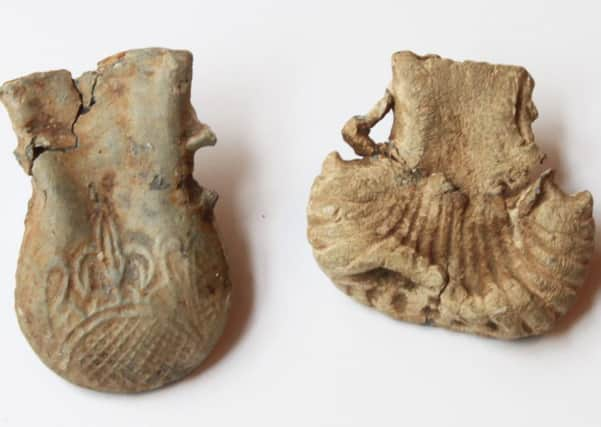Exhibit of the Week: Pilgrims' ampullae '“ Ryedale Folk Museum


In the archaeology display in the Manor House at Ryedale Folk Museum there are two small metal vessels, about 4cm wide and shaped like shells that are examples of medieval ampullae. They are containers or flasks bought at a religious site and used to take home holy water, oil or dust from the holy shrine or well.
It was believed at the time that these could cure sickness and misfortune. Holy water sprinkled on to farm land was thought to ensure a good crop, a sick animal anointed with this blessed water might be cured and thrive. The containers would originally have had small handles so they could be sewn to clothing to display to others the shrines that the pilgrim had visited but both our examples have missing handles.
Advertisement
Hide AdAdvertisement
Hide AdIn the 1370s William Langland described a pilgrim with “an hundred of ampullae on his hat” though it’s hard to imagine wearing such a weighty hat! The ampullae were found locally by metal detectorists in the 1990s and brought to the museum by the local co-ordinator of the Portable Antiquities Scheme.
In England, the manufacture of such pilgrim souvenirs developed from the cult of St Thomas a Becket in Canterbury in the late 12th century. The practise was copied at other shrines, including that of St William of York, whose shrine was in York Minster. Objects such as badges, tokens and flasks were cast in moulds from inexpensive metal and sold at pilgrimage sites in England, across Europe and in the Holy Land. Designs indicated the different shrines. One of our ampulla is decorated on the front with a chevron inside a circle, and on the back with a shell decoration. The scallop shell was originally associated with the shrine to St James in Compostella in northern Spain. By the late Middle Ages it was a common motif for pilgrims. Our second ampulla has a crown with a central fleur-de-lys and a hatched line design, probably an emblem of Mary as Virgin Queen of Heaven. The other side has a central shield decorated with horizontal cross bands and horizontal and vertical lines between, mimicking a coat of arms.
Pilgrimage is still part of the Catholic tradition –the statue of Our Lady of Lourdes in France is a popular site – and to go on pilgrimage to Mecca is one of the seven pillars of Islam. After the Reformation the Protestant church no longer followed this tradition although the shrine of Our Lady of Walsingham in Norfolk is a major Church of England pilgrimage centre.
l Ryedale Folk Museum reopens on 18 February. Why not visit and look out for these medieval souvenirs, and perhaps buy a 21st century souvenir of your own?